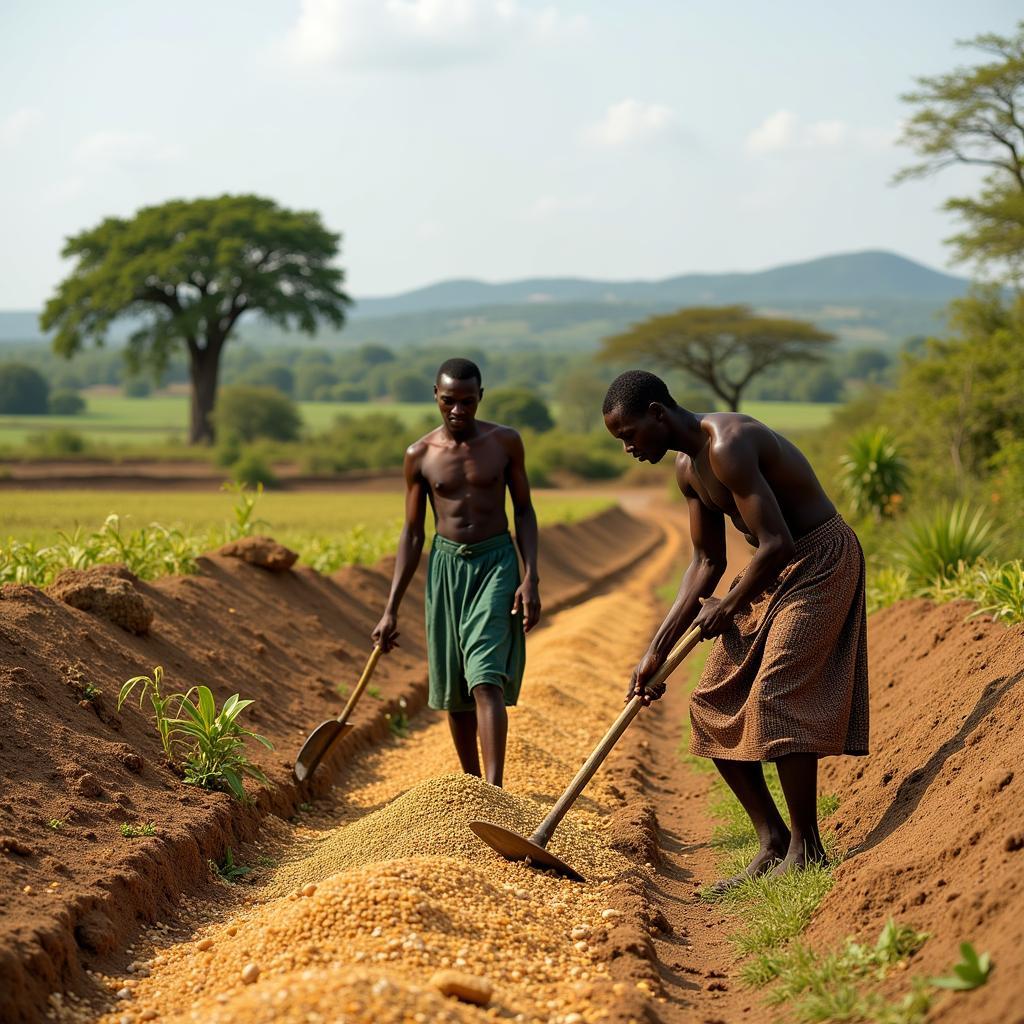African Antelope Names: A Comprehensive Guide
African Antelope Names are as diverse and fascinating as the animals themselves. From the majestic eland to the diminutive dik-dik, each species boasts a unique name, often reflecting its physical characteristics, behavior, or cultural significance. This guide delves into the captivating world of African antelope names, exploring their origins and meanings while providing a glimpse into the incredible biodiversity of the African continent.
The vast plains and savannas of Africa teem with a dazzling array of antelope species, each playing a crucial role in the delicate balance of the ecosystem. Understanding their names is a first step towards appreciating their unique place in the natural world. This exploration will uncover the stories behind the names, from common species to lesser-known gems. We’ll also consider the cultural significance of these animals in various African communities. For example, some antelopes are revered as symbols of grace and beauty, while others are valued for their meat or hides. This adds another layer of richness to our understanding of African antelope names. You can find more information on other fascinating African animals here: african animals list az.
Unveiling the Meaning Behind African Antelope Names
Many African antelope names are descriptive, reflecting the animal’s physical attributes. The “roan antelope,” for example, gets its name from its reddish-brown coat, while the “sable antelope” is named for its striking black coat. Other names allude to behavioral traits. The “springbok,” known for its high leaps, derives its name from the Afrikaans words for “jump” and “buck.”
Cultural Significance of Antelope Names
Some African cultures have incorporated antelope names into their languages and traditions. In many communities, specific antelope species hold symbolic meaning, representing strength, agility, or even spiritual power. Understanding these cultural connections enriches our appreciation for the diverse ways in which humans interact with the natural world.
Exploring Common and Lesser-Known African Antelope Names
While names like “impala” and “kudu” are widely recognized, many lesser-known antelope species also possess intriguing names. The “gerenuk,” with its elongated neck, is named after the Somali word for “giraffe-necked.” Similarly, the “klipspringer,” a small, rock-dwelling antelope, gets its name from the Afrikaans words for “rock jumper.”
Why are African Antelope Names Important?
Learning about African antelope names is not just about memorizing a list. It’s about understanding the complex relationships between language, culture, and the natural world. It’s about recognizing the diversity of life on our planet and appreciating the unique characteristics of each species. For example, the Central African Republic, known for its diverse wildlife, has a unique national flag symbolizing its rich heritage. Learn more about the central african republic flag.
How are African Antelope Classified by Name?
Scientific classification plays a crucial role in understanding the relationships between different antelope species. While common names can vary across regions and languages, scientific names provide a standardized system for identification and study. This allows researchers and conservationists to accurately track populations and understand the ecological roles of these magnificent creatures. You might also be interested in learning some popular african dog names male.
Dr. Anika Mohamud, a renowned wildlife biologist specializing in African mammals, shares her insights: “Understanding the etymology of antelope names provides a glimpse into the history and evolution of these species, highlighting the interplay between their physical characteristics, ecological niches, and cultural significance.”
What are some African antelope names beginning with I?
If you’re curious about specific antelope names, you can find more information about african antelope beginning with i. This focused resource offers a deeper dive into the specific characteristics and habitats of these fascinating animals.
In conclusion, African antelope names are more than just labels. They are gateways to understanding the rich tapestry of life on the African continent. From the familiar kudu to the less-known gerenuk, each name tells a story about the animal’s unique place in the world. By exploring these names, we gain a deeper appreciation for the diversity and wonder of the natural world. Considering the diverse landscape of the continent, have you ever wondered which african country mostly desert?
FAQ
-
What is the largest antelope in Africa? The eland is the largest antelope in Africa.
-
What is the smallest antelope in Africa? The royal antelope is the smallest antelope in Africa.
-
Are all antelopes found in Africa? While the majority of antelope species are found in Africa, a few species inhabit Asia.
-
What do antelopes eat? Antelopes are herbivores, feeding primarily on grasses, leaves, and other vegetation.
-
What are the main predators of antelopes? Lions, leopards, cheetahs, hyenas, and wild dogs are among the main predators of antelopes.
-
How many species of antelope are there in Africa? There are over 90 species of antelope in Africa.
-
Why are some antelope endangered? Habitat loss, poaching, and competition with livestock are among the main threats to antelope populations.
Need more information on African wildlife? Explore our other articles on related topics. For assistance, please contact us at +255768904061, [email protected], or visit us in Mbarali DC Mawindi, Kangaga, Tanzania. Our customer service team is available 24/7.


